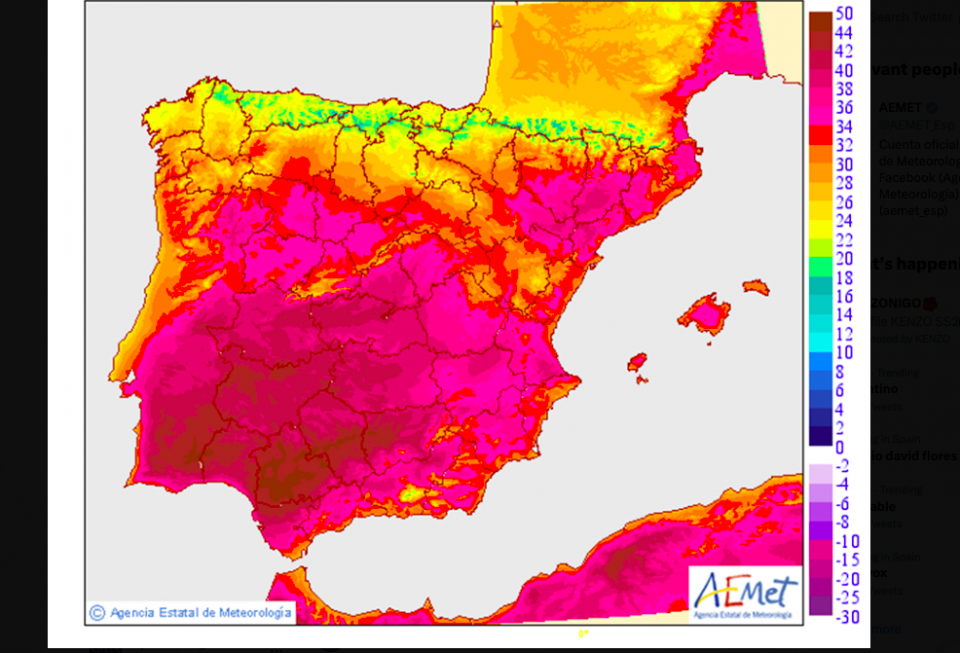Spain has been sweltering in its first official heatwave of the year this week, as the government announced a new department to investigate and alleviate the effects of extreme temperatures on human health.
The national weather agency, AEMET, said temperatures were predicted to hit 44C in the south during the hot spell, expected to last until Thursday, and noted that heatwaves have become more common during the month of June over the last 12 years.
AEMET spokesman Ruben del Campo said the heatwave, which began on Sunday, could push temperatures up to 40C in Madrid and the southwest, and above 44C around the southern cities of Seville and Córdoba, describing it as ‘the first heatwave of summer’.
On Sunday, the highest temperature of 43.8C was recorded in El Granado, an area in Huelva province in Andalusia region, he told reporters.
Meanwhile, Ecological Transition Minister Teresa Ribera said the country’s rising temperatures put vulnerable populations at risk, and more work is needed to understand how to prepare for longer, hotter summers. ‘We must investigate what happens to our bodies in response to the effects of climate change, in order to mitigate the consequences on our health,’ she said.
The proposal to create the new department, called the Observatory for Health and Climate Change, will be presented to Spain’s cabinet next month ahead of a snap general election to be held on 23 July.
Spain has already banned outdoor work during periods of extreme heat after the death of a municipal worker in Madrid last summer, and set legal maximum and minimum temperatures for workplaces.
The city of Barcelona also operates a network of more than 200 climate shelters to shield people from the heat.
Spanish researchers at the Carlos III Health Institute recently published a paper showing that urban environments without tree cover or adapted building materials can experience temperatures up to 11C higher than the nearby countryside. The phenomenon, known as ‘heat islands’, affects densely populated Spanish cities such as Valencia, Madrid and Barcelona.
Last year was Spain’s hottest ever, and spring 2023 was also declared the hottest on record. The Iberian Peninsula is currently the driest territory in Europe as a prolonged drought extends into summer, the European Union’s Copernicus Emergency Management Service said on Monday.
Estamos en un episodio de #OlaDeCalor. Es la primera del verano de 2023 y llega en junio. Probablemente, en su transcurso, se lleguen a alcanzar los 44 ºC. ¿Hay más olas de calor actualmente en junio? ¿Y a lo largo del verano? Hilo 🧵 pic.twitter.com/LjqucibVR6
— AEMET (@AEMET_Esp) June 25, 2023
Sign up for the FREE Weekly Newsletter from Spain in English.
Please support Spain in English with a donation.
Click here to get your business activity or services listed on our DIRECTORY.



